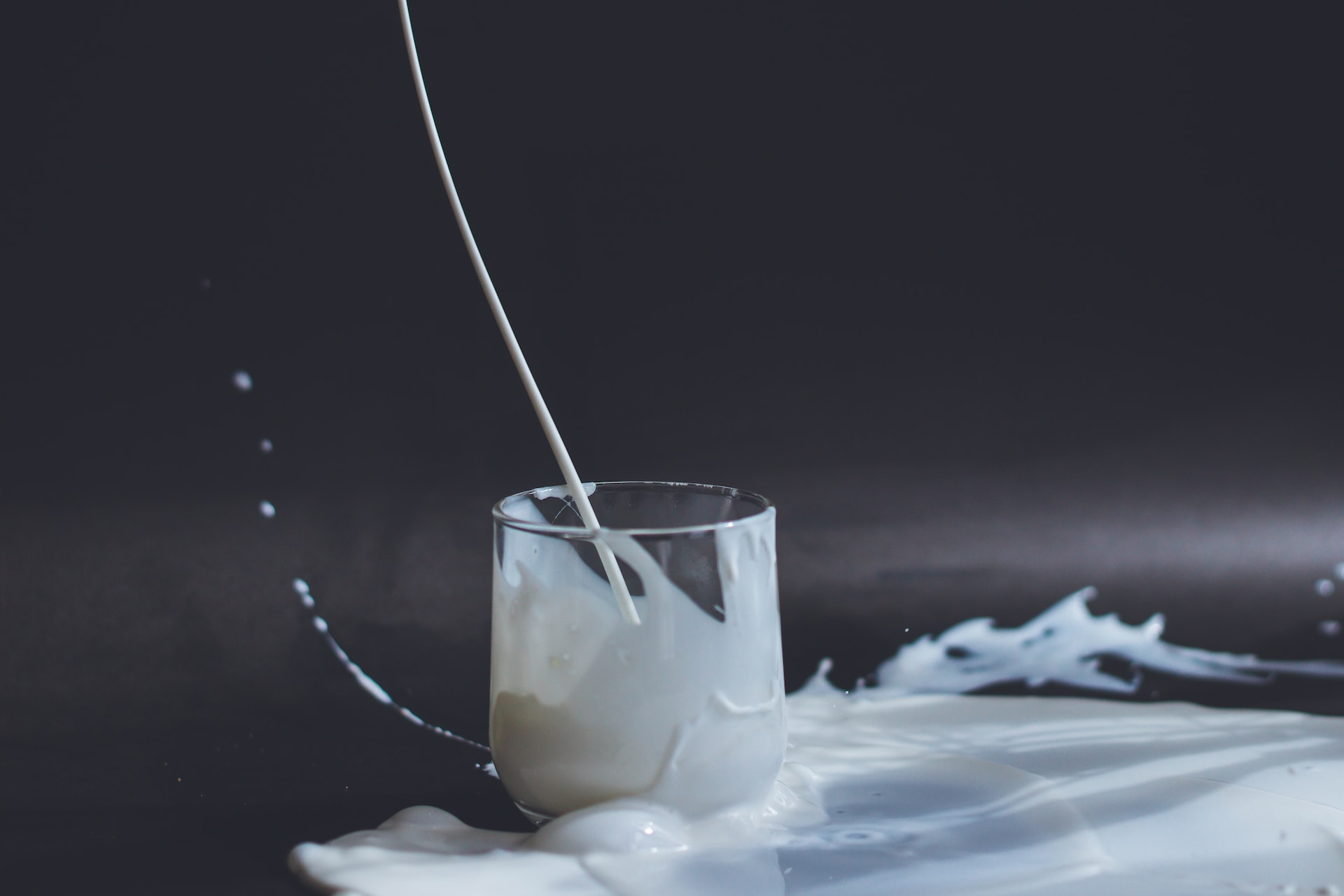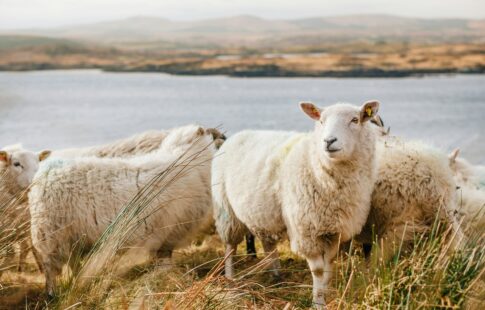
Is Raw Milk Healthy? Science Says No
We are reader-supported. When you buy through links on our site, we may earn affiliate commission.
In the popular comedy series Schitt’s Creek, the main characters get busted in a police raid at a traffic stop. The contraband they carried? Raw milk.
Although the situation was played for laughs, selling raw milk really is illegal in many places, and for good reason. What makes this seemingly innocuous food so dangerous?
Russian Roulette
Around 1900, nearly 15,000 Americans — mostly children — died every year from a milk-borne illness the United States has largely forgotten. Patients often developed ulcers in their mouths and throats. As their bodies began wasting away from the inside, their bowels would swell up, and they would experience severe abdominal pain, diarrhea, and chest pain.
By the time they died, they were often producing bloody stools and suffering from meningitis. Their skeletal appearance earned this disease, now known as tuberculosis, the nickname “consumption” because it seemed to consume people’s muscles.
Drinking milk was once a game of Russian roulette — would you come away hydrated, or would your organs shut down? In addition to tuberculosis, Listeria, Salmonella, and E. coli infections were also much more common. Today, however, these foodborne illnesses are rare, and getting tuberculosis from milk is practically unheard of in developed countries. What changed?
Groundbreaking Discoveries
Two major scientific breakthroughs allow us to drink milk without getting sick.
Pasteurization
The first step toward developing healthy milk was the invention of pasteurization. The eponymous Louis Pasteur, who also discovered that microorganisms cause diseases, patented this germ-killing process in 1865.
Pasteur found that heating foods to a high temperature for a short amount of time killed pathogens and changed the enzymes that led to spoilage. The result? Thanks to FDA-mandated pasteurization, modern food has a much longer shelf life and better safety profile than it did just a century ago.
Pasteurization is different from cooking. Cooking kills microbes, but it also significantly alters food’s taste and nutrient content. Think about how different a raw egg looks and tastes compared to a cooked one. In contrast, pasteurization destroys most yeast, molds, and bacteria without changing the makeup of food.
Different foods are pasteurized in different ways because they have unique characteristics, such as their acidity and fat content.
Milk — the most commonly pasteurized food — is heated at a minimum of 145°F for at least 30 minutes. High-temperature, short-time (HSTS) pasteurization treats milk at 161°F for 15 seconds. A new technology, called ultra-high temperature (UHT) pasteurization, blasts bacteria at 275-302°F for just four to 15 seconds. The higher the temperature, the longer milk lasts in the fridge.
Unraveling the Mystery of Tuberculosis
The second reason milk has become much safer? In 1882, physician and microbiologist Robert Koch discovered the cause of tuberculosis — a bacterium.
At the time, people believed tuberculosis was an inherited illness. The concept of infectious diseases was still in its infancy, so Koch’s idea was rather hard to believe. Still, his discovery was groundbreaking and paved the way for other scientists to determine that tuberculosis could spread from cattle to people.
Almost 100 years later, the U.S. Food and Drug Administration (FDA) finally made pasteurization mandatory for dairy products. In addition to killing tuberculosis, pasteurization also destroys the Salmonella, Brucella, Campylobacter, Cryptosporidium, E. coli, and Listeria that raw milk often carries.
How Does Milk Get Contaminated?
There are several ways bacteria can contaminate raw milk:
- An animal’s udder may be infected.
- An animal may have an underlying disease like tuberculosis.
- Germs from the animal’s skin or feces can get into the milk.
- Rodents can get into the milk during storage or transport.
- Dairy workers’ dirty boots or clothing can cross-contaminate the milk.
Thankfully, pasteurization kills the types of germs that result from these situations.
Isn’t Natural Food Healthier Than Processed Food?
Not necessarily. Many diseases, including salmonellosis, E. coli infections, listeriosis, and tuberculosis are all perfectly natural. That does not make them healthy.
Processing food includes everything from cutting it up to freezing it to cooking it — it doesn’t mean you’re making it less healthy. In fact, pasteurization turns a very dangerous source of food into something you can eat or drink without thinking twice.
However, other types of processed foods — such as those with high amounts of sugar, salt, or other preservatives added to make them last longer — can be bad for you. When people talk about processed foods being unhealthy, this is usually what they’re referring to.
Does Raw Milk Contain Beneficial Bacteria?
It might, but it contains so many harmful bacteria that it’s not worth the risk. Many other, much safer foods contain abundant beneficial bacteria.
Great sources of probiotics include pasteurized dairy products like yogurt, buttermilk, kefir, and soft cheeses. You can also get probiotics from sauerkraut, sourdough bread, kombucha and other fermented foods or by taking a probiotic supplement.
Who Is Most at Risk From Drinking Raw Milk?
The people most at risk of food poisoning are:
- Pregnant women
- Adults over the age of 64
- Children younger than five years of age
- People with weakened immune systems from medical treatment or illness
However, anyone who drinks raw milk can develop a food-borne illness. There’s no way to predict whether a particular glass of milk is safe or deadly.
Is Raw Milk From Organic, Grass-Fed Cows and Goats Safe?
No. Even the milk from healthy animals that have never been treated with antibiotics can be contaminated. Illness outbreaks come from both grain-fed and grass-fed dairy animals. That’s because even if the animals themselves aren’t sick, germs can contaminate the milk between the time it’s collected and when someone drinks it.
It’s true that milk collection methods have become more sanitary over the years. Most dairies clean their milking equipment and their animals’ udders before milking. However, pasteurization is still the ultimate method for killing bacteria and ensuring milk is safe to drink.
Is Raw Milk Healthy? Absolutely Not.
The verdict is clear — if you’re in the mood for a latte, you’re much better off choosing pasteurized milk. Raw milk doesn’t offer any benefits, like probiotics or ease of digestibility, over its pasteurized counterpart. You may be able to get away with drinking it in the same way you can get away with not wearing a seatbelt, but you’ll always be putting yourself at risk.
Share on
Like what you read? Join other Environment.co readers!
Get the latest updates on our planet by subscribing to the Environment.co newsletter!
About the author
Rachel Lark
Rachel serves as the Assistant Editor of Environment.co. A true foodie and activist at heart, she loves covering topics ranging from veganism to off grid living.





